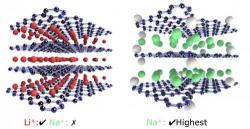Researchers from Kansas State University studied graphene oxide sheets as flexible paper electrodes for sodium-ion flexible batteries and found GO to have important properties that can boost the efficiency of such batteries.

The scientists explored graphene oxide sheets as flexible paper electrodes for sodium batteries. They found that sodium storage capacity of paper electrodes depends on the distance between the layers that can be adjusted by heating it in argon or ammonia gas. The researchers also showed that a flexible paper composed entirely of graphene oxide sheets can charge and discharge with sodium-ions for more than 1,000 cycles.
Reduced graphene oxide sheets produced at high temperatures have near zero sodium capacity, while reduced graphene oxide sheets produced at 500 degrees C have the maximum capacity. This is important as graphite has negligible sodium capacity and is not regarded as a viable electrode material for sodium batteries. So not only can graphite derivative rGO be useful for use as paper electrodes, it can also provide an impressive amount of charging cycles.
The researchers also studied the mechanical behavior of the electrodes made of reduced graphene oxide sheets, and found that they have a massive ability to sustain strains before failing. This property can allow for long-life batteries.
The scientists say that these results are of significance as stationary batteries (for stationary energy systems and large vehicles, for example) are of growing importance and need to be cheaper, safe and environmentally friendly and sodium (which is in large supply) can be a proper candidate for replacing lithium-ion batteries.